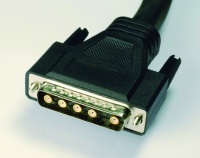Visionary developments
A new interface specification could offer significant advantages over the older Camera Link standard.

Over the past 10 years, the Camera Link standard has become widely acknowledged as the de facto means by which systems integrators interface cameras to computers in industrial vision systems.
Despite this, the standard is now beginning to show its age in terms of its inherent cost, its maximum 2-6 Gbit/sec speed bandwidth, and the 10m cable length restriction it usually places on systems developers.
Now, a new interface specification called CoaXPress has entered the frame that its developers — a European consortium comprising the Belgian fabless chip maker EqcoLogic, Dutch camera vendor Adimec and UK camera interface board developer Active Silicon — believe offers some significant advantages over the older Camera Link standard.
These European firms have also recently been joined in their efforts to back the new specification by two Japanese firms — AVAL DATA, a manufacturer of interface boards, and NED, a maker of line scan cameras — who are providing an independent route to market for the technology in Japan.
Register now to continue reading
Thanks for visiting The Engineer. You’ve now reached your monthly limit of premium content. Register for free to unlock unlimited access to all of our premium content, as well as the latest technology news, industry opinion and special reports.
Benefits of registering
-
In-depth insights and coverage of key emerging trends
-
Unrestricted access to special reports throughout the year
-
Daily technology news delivered straight to your inbox










Radio wave weapon knocks out drone swarms
Probably. A radio-controlled drone cannot be completely shielded to RF, else you´d lose the ability to control it. The fibre optical cable removes...